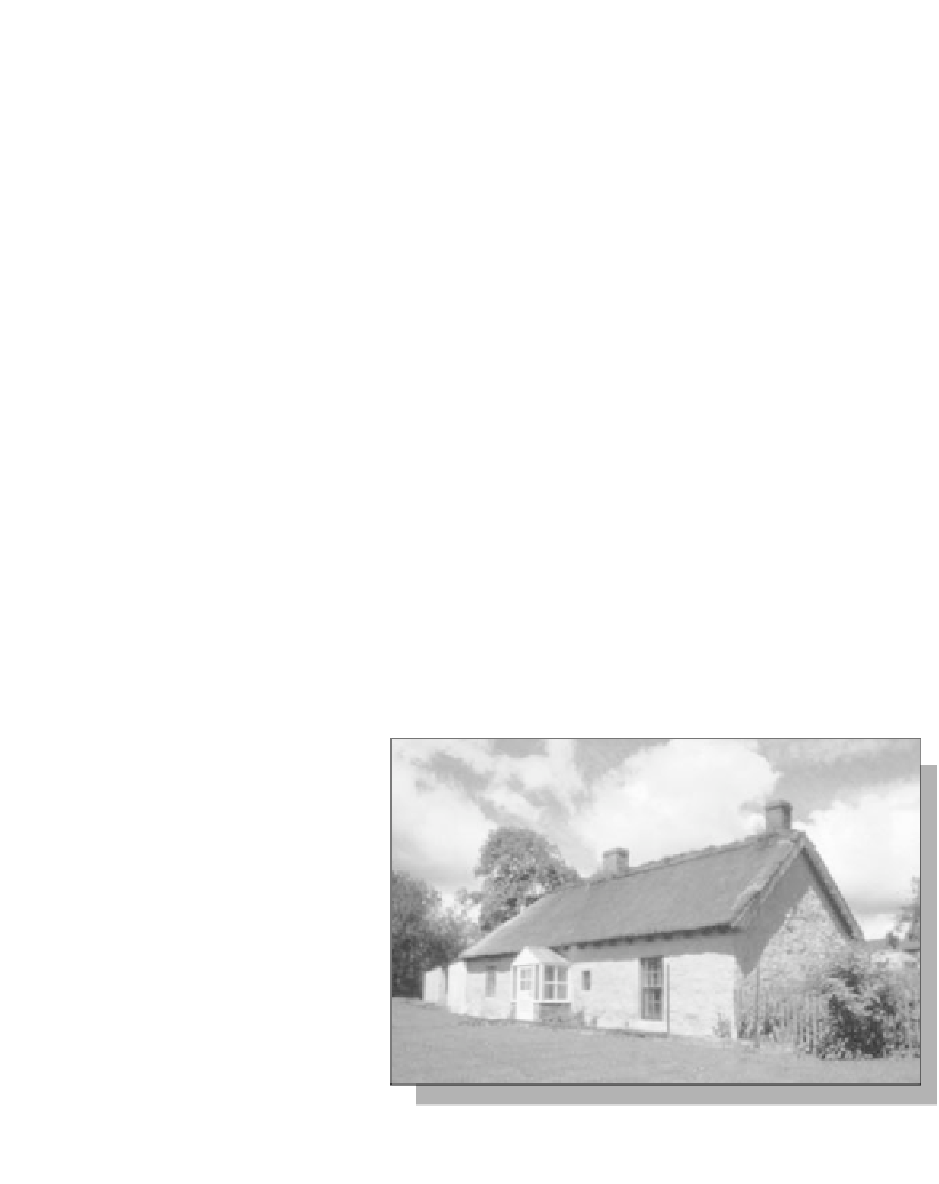Civil Engineering Reference
In-Depth Information
Expanded mineral products
Products such as exfoliated vermiculite or expanded perlite can be used as aggre-
gate. There is no chance of mould, and higher thermal insulation is achieved.
However, mineral aggregates require much more energy to extract and produce
than natural fibres.
Waterglass
An earth structure can be waterproofed by brushing a solution of 5 per cent
waterglass over the surface of the wall. The solution can also be used for dipping
earth blocks before mounting them.
Methods of construction
All the different construction techniques require protection from strong sunshine
and heavy rain. The easiest way is to hang a tarpaulin over the building. It is also
advantageous to build during the early summer, so that the walls are dry enough
to be rendered during the autumn.
Foundation materials for earth buildings are stone, lightweight expanded clay
blocks, normal concrete or earth mixed with Portland cement. These should be
built to at least 40 cm above ground level, and must be at least as wide as the
earth wall, usually about 40 cm.
Stone and concrete walls can absorb a great deal of moisture from the ground
through capillary action. Whatever happens, this moisture must not reach the
earth structure, as this is even more sensitive to moisture than timber construc-
tion. Damp-proofing can be carried out with asphalt.
Pisé (earth ramming technique)
Earth suitable for ramming contains
primarily sand, fine gravel and a
small amount of clay which acts as a
binder. Through ramming, these
components are bound together.
After the building process, the wall
will be cured by substances in the
air and eventually be almost as hard
as chalk or sandstone. Shuttering
and further equipment is required
for ramming.
Shuttering and ramming
equipment
Shuttering must be easy to handle
and solid. There are many patents.
Figure 13.18: Recently renovated 200-year-old earth building in
pisé construction in Perthshire. Source: Howard Liddell

